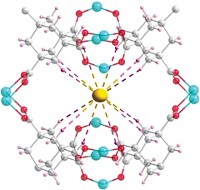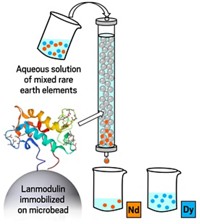Advertisement
Grab your lab coat. Let's get started
Welcome!
Welcome!
Create an account below to get 6 C&EN articles per month, receive newsletters and more - all free.
It seems this is your first time logging in online. Please enter the following information to continue.
As an ACS member you automatically get access to this site. All we need is few more details to create your reading experience.
Not you? Sign in with a different account.
Not you? Sign in with a different account.
ERROR 1
ERROR 1
ERROR 2
ERROR 2
ERROR 2
ERROR 2
ERROR 2
Password and Confirm password must match.
If you have an ACS member number, please enter it here so we can link this account to your membership. (optional)
ERROR 2
ACS values your privacy. By submitting your information, you are gaining access to C&EN and subscribing to our weekly newsletter. We use the information you provide to make your reading experience better, and we will never sell your data to third party members.
Sustainability
Ligands could help recycle nuclear waste
Robust nitrogen-based ligands bind selectively to actinides and separate them for potential reuse in nuclear fuel
by XiaoZhi Lim
June 24, 2016

The need to dispose of radioactive waste is a problem that plagues nuclear power. Some 80% of the actinides, which include uranium and plutonium, remain in nuclear fuel after it is spent—thanks to the accumulation of lanthanide waste products formed during fission. Now researchers report a robust class of ligands that can bind to actinides and efficiently separate them from lanthanides, even under harshly acidic and radioactive conditions (J. Am. Chem. Soc. 2016, DOI: 10.1021/jacs.6b03106). Using such ligands to recover and recycle unused actinides could potentially render nuclear waste nonradioactive and reduce the amount that ultimately needs to be disposed of.
During the nuclear fission process, the radioactive decay of uranium and plutonium produces many elements, including lanthanides such as europium and neodymium. These lanthanides poison the fuel so that it can’t be used safely anymore for energy production, says chemist Alessandro Casnati of the University of Parma.
The concept of separating actinides from lanthanides in order to recycle nuclear fuel has been around for decades, but realizing it has been tricky. When designing ligands that bind to actinides, “there’s always a kind of trade-off,” says Andreas Geist, a nuclear chemist at Karlsruhe Institute of Technology, who was not involved in the study. “We improve in one direction, but move backwards in another.”
The challenges are multifaceted. Actinides and lanthanides are chemical look-alikes: They have very similar ionic sizes and almost exclusively form ions of +3 charge, so ligands often bind to both. Ligands also must survive strongly acidic and radioactive industrial operating conditions and should be composed of only combustible elements—carbon, nitrogen, oxygen, and hydrogen— so that they can simply be incinerated when they become too degraded to use again.
Casnati, along with Elena Macerata of the Polytechnic University of Milan and colleagues, used nitrogen-based ligands that had previously shown selectivity for actinides over lanthanides. To make them more robust, the researchers included aromatic rings in the ligands’ design to help enhance their chemical stability.
The team then tested the molecules’ binding ability on an organic solution of actinides and lanthanides extracted from samples of nuclear waste. They shook the extract with an aqueous solution of each molecule and allowed the mixture to separate into organic and aqueous layers. After five minutes, the aqueous layer contained almost 95% of the actinides, bound to the ligands. Although other ligands have achieved higher selectivity, these ligands were able to keep up their separation performance even in strongly acidic conditions while being bombarded with up to 200 kilograys of radiation, which is about 2,000 times the normal amount emitted by spent fuel.
Like all ligands designed for this purpose, they are “a compromise,” Geist says. But the ones reported in the new study are “a promising compromise,” since they are the first to sufficiently meet all the requirements.
The next challenge is to find ways to scale up synthesis of the ligands and test their stability and performance in even harsher conditions, with stronger radiation for longer periods of time, Casnati says.




Join the conversation
Contact the reporter
Submit a Letter to the Editor for publication
Engage with us on Twitter